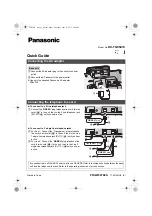
– 150 –
Trouble
Cause (1)
Cause (2)
Check and corrective measures
6. Thread breakage at back or back-
tuck sewing
6-1) The needle has improperly
been attached.
1-A) The orientation of the needle is
wrong.
Attach the needle so that the long groove of
the needle faces exactly to the left or slightly
toward the operator as illustrated.
1-B) The thread take-up spring is
inappropriately adjusted.
Adjust the thread take-up spring so that the
thread is not fed from the thread tension disk
before the thread take-up spring moves to
the end. (The more effective this adjustment
becomes, the lower the spring tension is set or
the longer the stroke of the spring is set.)
Wind the thread around the needle or use the
T-type needle bar thread guide (B1418227T00).
6-2) The timing of the hook is too
late.
2-A) Late hook timing excessive-
ly enlarges and deforms the
needle thread loop, and accord-
ingly, the thread is caught twice
with the blade top resulting in
thread breakage.
Conduct hook adjustment 0.2 to 0.5 mm earlier
than the lower marker line of the needle bar.
Wind the thread around the needle.
6-3) The thread take-up spring is
inappropriately adjusted.
3-A) The stroke of the thread take-up
spring is too long or too small.
Adjust the stroke of the thread take-up spring.
3-B) The tension of the thread take-
up spring is too high or too low.
Adjust the tension of the thread take-up spring.
3-C) Spring selection for the thread
to be used is inappropriate.
For the A-type thread tension, replace the cur-
rent thread take-up spring with a standard type
spring. (for a #60 or thicker thread)











































